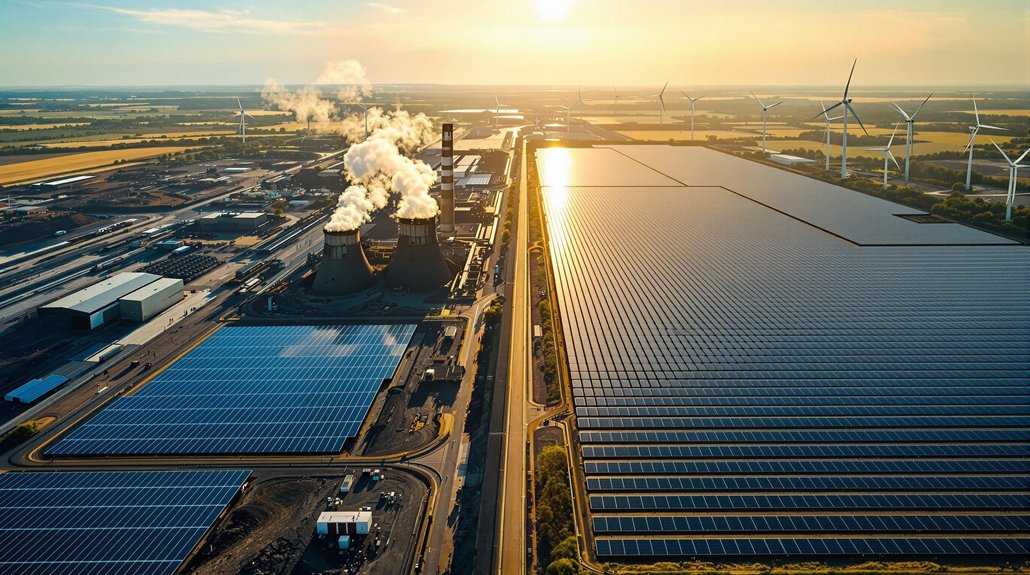Renewable energy officially surpassed coal in US electricity generation in 2022, marking a historic shift. Renewables produced 21% of electricity compared to coal’s 20%. Coal’s dominance has collapsed from 51% in 2000 to just 15% by 2024. Solar and wind now combine for 17% of US electricity, supported by expanding battery storage capacity. Over 780 coal plants have closed since 2000, with more shutdowns expected as market forces continue to reshape America’s energy landscape.
Renewable energy has officially dethroned coal as America’s power generation leader. In a historic shift, renewables generated 21% of US electricity in 2022, edging past coal’s 20%. This trend has accelerated, with solar and wind now combining for 17% of US electricity in 2024.
Coal’s decline has been dramatic. It powered 51% of America’s electricity in 2000 but dropped to just 15% by 2024. Since 2000, 780 coal-fired units have shut down across the country, with 120 more plants expected to close within five years.
Coal’s dramatic fall from powering half of America to just 15% signals a decisive shift in our energy landscape.
Solar power continues its impressive growth trajectory. The US reached 220 GW of solar capacity by the end of 2024, with 39.6 GW added in that year alone. Solar now supplies over 7% of US electricity, and experts predict a 33% increase in solar generation for 2025. The solar industry’s remarkable expansion follows the addition of 32.4 GW capacity in 2023, setting the stage for continued growth.
Wind energy has also seen substantial development. Total wind capacity reached 153 GW by the end of 2024, with 5.3 GW of new generation added that year. Wind now accounts for 10.2% of total US electricity generation, though growth has slowed due to interconnection issues and supply chain challenges. Texas continues to lead the nation as the top wind producer, followed by Iowa and Oklahoma, all contributing significantly to the renewable energy landscape.
Battery storage capacity nearly doubled in 2024, reaching 29 GW, with 47% more growth projected for 2025. This expansion supports grid stability for variable renewable sources like wind and solar. Geographic diversity of installations further enhances the grid resilience, especially during extreme weather events.
Economics favor renewables, with 99% of coal plants now more expensive than wind or solar alternatives. Corporate America has taken notice, setting a record with 28 GW of renewable energy procurement in 2024.
Federal policies have accelerated the shift. The Inflation Reduction Act provides significant tax credits for renewables, while the Bipartisan Infrastructure Law invested $1 trillion in renewable energy.
Looking ahead, renewables are expected to become the largest global electricity source by 2025. The US renewable energy market is projected to reach 790.19 GW by 2030, with 950 GW of new solar and wind additions expected between 2024 and 2035.








